Looking for a brain-teasing challenge that’ll make you see things differently? Mirror riddles are the perfect mind puzzlers to sharpen your thinking and spark creativity. These clever word games require you to visualize reflections and understand symmetry in ways that’ll surprise even the most seasoned puzzle enthusiasts.
10 Brain-Teasing Mirror Riddles That Will Test Your Reflection
- What’s Always in Front of You But Can’t Be Seen? Your reflection can always be seen in a mirror, but what’s always in front of you that remains invisible? The answer is your future. We constantly move toward it, yet it’s impossible to see until it becomes the present.
- What Gets Wetter as It Dries? Looking in the mirror while solving this one might help! A towel gets wetter as it dries other things. The towel absorbs moisture when you use it after a shower, making itself wetter while drying you off.
- What Has a Reflection But Casts No Shadow? A mirror itself reflects everything but doesn’t cast a traditional shadow like solid objects do. The mirror surface reflects light rather than blocking it, creating the paradoxical nature of this riddle.
- What Can You See Once in a Minute, Twice in a Moment, But Never in a Thousand Years? The letter “M” appears once in “minute,” twice in “moment,” and zero times in “thousand years.” This wordplay riddle requires you to examine the spelling rather than the concepts themselves.
- What Breaks When You Say It? Silence breaks when you speak any word. This riddle plays with the concept of reflection by making you think about how actions and their consequences are often mirror opposites of each other.
- What Has a Face But No Eyes, Hands But No Arms? A clock features a face with numbers and hands that move, yet lacks human features. When reflected in a mirror, a clock still functions the same way, though some digital displays might appear backward.
- What Can Travel Around the Industry While Staying in a Corner? A postage stamp can journey globally while remaining affixed to the corner of an envelope. This riddle makes you reflect on how something stationary can still help movement across vast distances.
- What Has Keys But No Locks, Space But No Room, and You Can Enter But Not Go In? A keyboard has keys, spacebar, and enter key, yet these function differently than their physical counterparts. Looking at a keyboard in a mirror creates a backward image that would be impossible to type on.
- What Can Fill a Room But Takes Up No Space? Light fills rooms without occupying physical space, much like how mirrors can make spaces appear larger without adding actual square footage. This riddle challenges our perception of physical presence.
- What Can You Catch But Not Throw? A cold can be caught but not thrown to others in a literal sense. This mirror riddle reflects on how language uses metaphors that don’t work when reversed, similar to how some words read differently when viewed in a mirror.
Each of these riddles requires you to reflect on language, perspective, or physical properties in unexpected ways. Try solving them before looking at the answers, and notice how many involve concepts of reflection, reversal, or hidden meanings – just like puzzles involving actual mirrors.
The Science Behind Mirror Riddles and Visual Perception
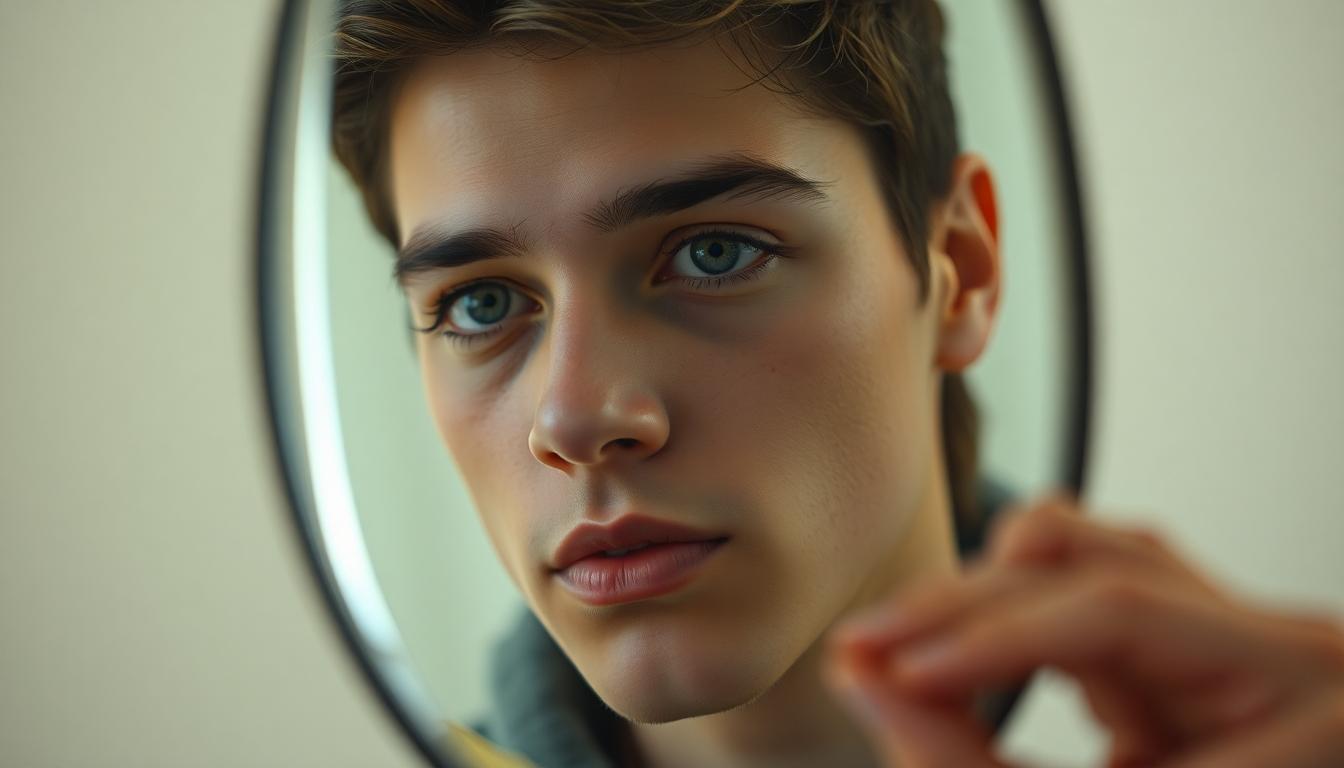
Mirror riddles captivate our minds by exploiting the fascinating way our brains process visual information. They cleverly leverage both literal and metaphorical paradoxes of reflections, creating puzzles that challenge our perception and cognitive abilities.
How Mirrors Trick Our Brain
Mirrors create powerful spatial ambiguities that force our brains to recalibrate normal spatial reasoning. The phenomenon of lateral inversion confuses our visual processing, as seen in riddles like “I show you twice, but one is not you; a version that’s flipped, but still true” (answer: double reflection). When we look at reflections, our occipital lobe—the visual processing center—interprets these as static images, while our parietal lobe simultaneously struggles to resolve the spatial conflicts presented. This neurological tension creates cognitive dissonance, making mirror riddles particularly challenging to solve. The brain must constantly negotiate between what it expects to see and the actual reflected information, working through multiple layers of visual processing to make sense of the paradoxical nature of reflections.
The Psychology of Reflection Puzzles
Reflection puzzles engage our metacognition by requiring us to become aware of our own thought processes. These riddles, such as “I show your face, but never your true nature” (answer: veiled reality), exploit self-perception biases where we often conflate external appearance with internal identity. Solving mirror riddles demands that we inhibit automatic interpretations of reflections as truth and instead activate abstract reasoning capabilities. This cognitive flexibility is directly linked to executive function in the prefrontal cortex. When working through these puzzles, we’re challenged to reconcile literal images with abstract interpretations—a complex process that relies on both top-down processing (applying our prior knowledge) and bottom-up processing (interpreting new sensory input). This dual-processing approach explains why even simple-seeming mirror riddles can require sophisticated cognitive maneuvers to solve correctly.
Classic Mirror Riddles That Have Stood the Test of Time
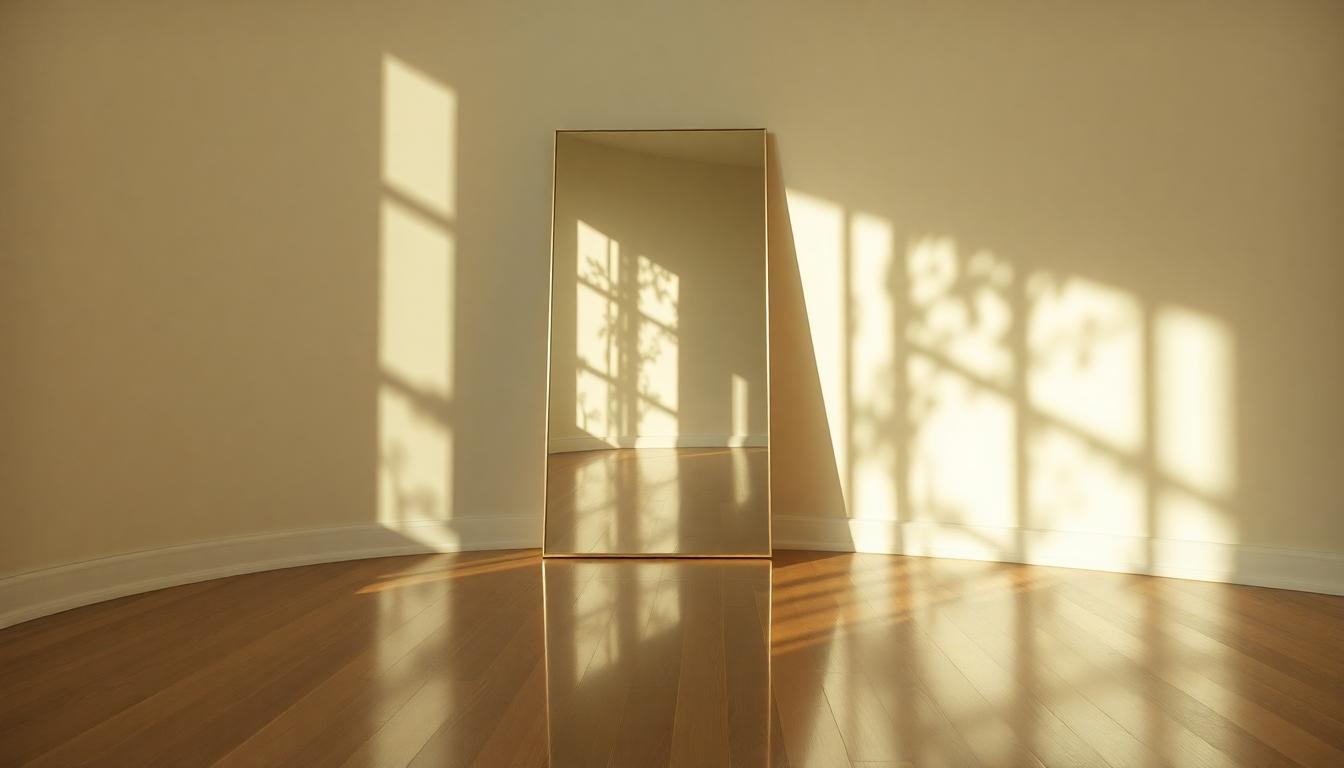
Mirror riddles have fascinated humans for generations with their clever wordplay and optical illusions. These timeless brain teasers challenge our perception and understanding of reflection.
The Left-Right Reversal Paradox
The left-right reversal paradox forms the foundation of many classic mirror riddles. “I reflect all that stands before me, but what you see is reversed” captures the essence of this phenomenon perfectly. Mirrors create a front-to-back reversal relative to the observer, producing the illusion that left and right have switched places. This spatial confusion has inspired many riddles including the clever “I can turn left into right, and up into down.” Many people struggle to explain why mirrors reverse horizontally but not vertically, making these riddles particularly effective at challenging our spatial reasoning. The paradox becomes even more apparent with text, as letters appear backward in reflections, leading to riddles like “I show your face, but not quite right; letters flip and twist in me.”
The Infinite Reflection Challenge
When two mirrors face each other, they create a fascinating infinite regression effect that has inspired many brain teasers. Though not explicitly formatted as riddles in traditional collections, concepts like “I’m often framed but never convicted” or “I’ve witnessed countless moments of joy and sorrow” tap into the mysterious nature of mirrors as witnesses to human experience. Two-way mirror riddles present another layer of complexity, challenging us with concepts like “If I turn around, you see someone else.” These riddles explore how reflective surfaces create layered realities and distort our perception. The silent mimicry aspect appears in riddles such as “I speak without a mouth, repeat without a sound. I mimic every gesture, yet I make no move,” highlighting how mirrors passively replicate human actions without agency. This uncanny ability to create visual recursion makes infinite reflection riddles particularly mind-bending.
Mirror Riddles for Children: Developing Spatial Awareness
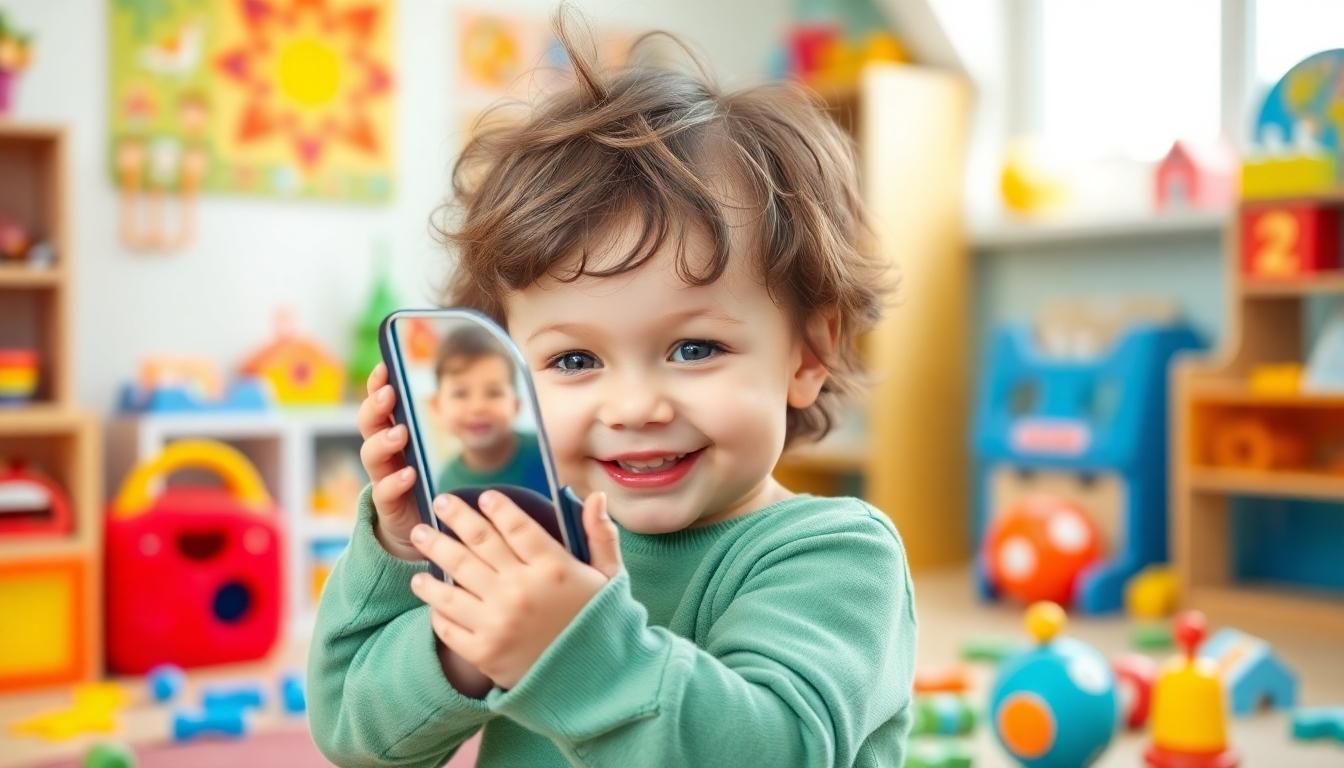
Mirror riddles offer children a fascinating way to develop spatial awareness through captivating with reflective images. These playful puzzles challenge young minds to understand space differently by presenting them with reflections that reveal hidden words, numbers, or shapes.
Easy Mirror Puzzles for Beginners
- Reflection Symmetry – Place simple words like “AMBULANCE” or “WOW” on paper and invite children to use a mirror to discover which ones remain readable in reflection. This activity introduces the concept that some letters and words maintain their form when mirrored while others transform completely.
- Mirror Maze – Create an exciting treasure hunt by setting up a small maze with strategic mirror placements. Children must navigate by viewing reflections rather than looking directly at objects, building their understanding of spatial relationships and reflection angles.
- Face Recognition – Hold up a mirror and demonstrate various emotions like happiness, surprise, or confusion. Ask children to identify and then replicate these expressions, strengthening their connection between visual perception and physical response.
- Hidden Message Hunt – Write secret messages backward on paper that can only be read correctly when viewed in a mirror. This puzzle delights children while teaching them about reverse orientation and letter formation.
- Reflection Prediction – Show children different shapes and ask them to predict how they’ll appear when reflected. This exercise builds anticipatory thinking skills about spatial transformation.
Educational Benefits of Mirror Games
Mirror games and puzzles provide substantial developmental advantages for growing minds:
- Spatial Awareness Development – Mirrors offer unique perspectives on environments, helping children understand different viewpoints and spatial relationships. When children track movement in mirrors, they’re building neural pathways crucial for spatial reasoning.
- Enhanced Self-Awareness – Through mirror play, children develop better understanding of their bodies and movements. They learn to recognize themselves and gain body awareness that contributes to physical coordination.
- Cognitive Skill Building – Mirror activities naturally enhance problem-solving capabilities and promote critical thinking. Children must mentally rotate objects, anticipate transformations, and recognize patterns in reflection.
- Emotional Intelligence Growth – Recognizing and replicating emotions in mirrors helps children identify and understand facial expressions. This practice builds the foundation for empathy and social awareness.
- Mathematical Concept Introduction – Mirror puzzles naturally introduce concepts like symmetry, orientation, and geometric transformation in an captivating, hands-on manner that makes abstract mathematical ideas concrete.
Mind-Bending Mirror Riddles From Famous Puzzle Masters
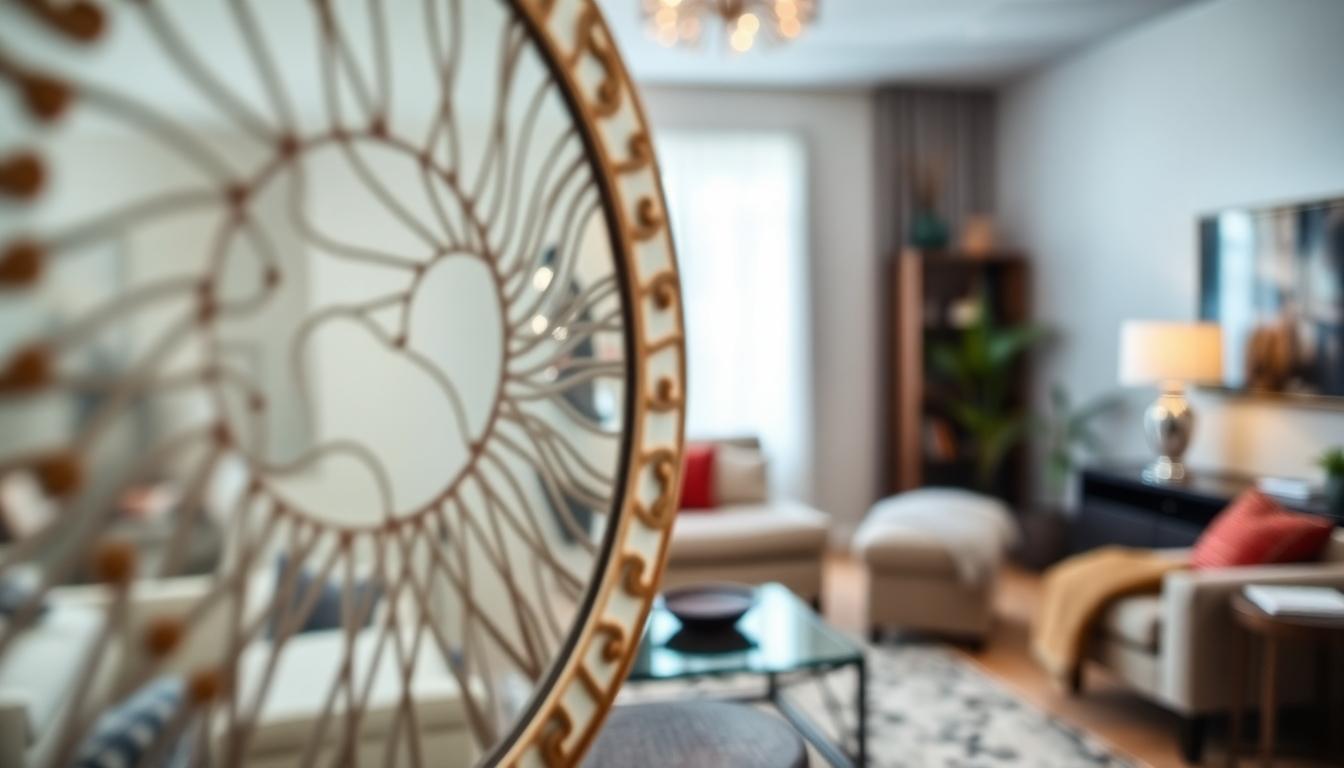
Throughout history, puzzle masters have created fascinating mirror riddles that challenge our perception and understanding of reality. These mind-bending puzzles often require us to think differently about reflections and symmetry, pushing the boundaries of conventional logic.
Lewis Carroll’s Mirror-Themed Brainteasers
While Lewis Carroll never explicitly published a collection of mirror riddles, his fascination with reflection concepts appears throughout his work. Carroll’s “Through the Looking-Glass” demonstrates his interest in mirror worlds and reversed realities. The author’s mathematical background and love for logical puzzles naturally lend themselves to the concepts of reflection and symmetry. His style of creating puzzles that distort reality would have been perfectly suited for mirror-based brainteasers. Carroll’s approach to puzzles typically involved clever wordplay and logic challenges that invited readers to question their assumptions about the industry around them.
Modern Mirror Riddles From Contemporary Puzzle Creators
Today’s puzzle creators have developed many ingenious mirror riddles that continue to captivate puzzle enthusiasts. The Reverse Trick riddle asks, “I flip your industry but stay the same, Left looks right, but who’s to blame? Try to read, it won’t look right, What am I?” with the answer being a mirror. Another popular puzzle called The Copy Without a Past states, “I follow your moves without delay, Yet I have no memories, come what may. I vanish when you step aside, What am I?” which also refers to a mirror. The Silent Twin riddle challenges with “You see me daily, yet I don’t exist, No voice, no thoughts, just an empty twist. Mimic me, and I’ll do it too, What am I?” – again revealing a mirror as the solution. These contemporary riddles showcase how modern puzzle makers use mirrors to create captivating brain teasers that play with perception and logic in unexpected ways.
Mirror Riddles in Literature and Popular Culture
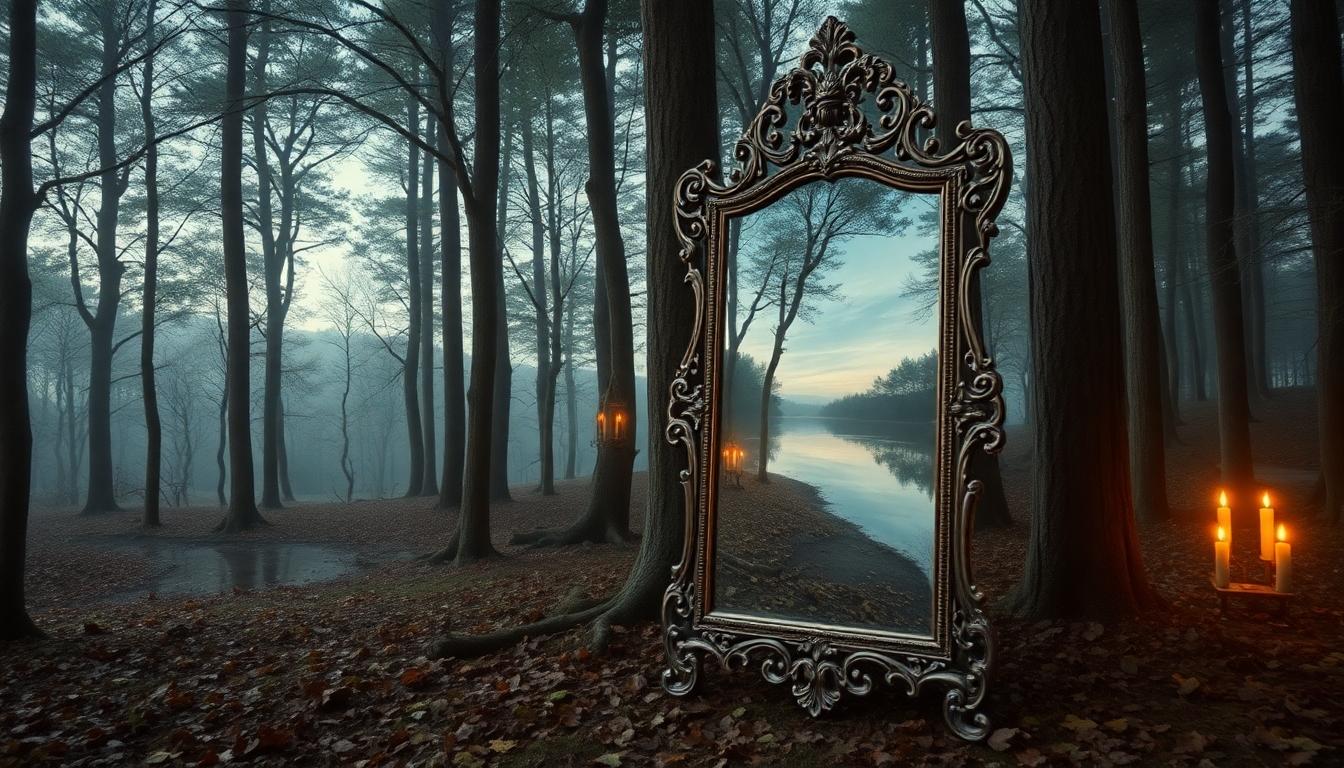
Mirrors have long fascinated storytellers, serving as powerful literary devices that symbolize self-reflection, duality, and hidden truths. We’ve found that mirror-based puzzles and riddles appear throughout literature and entertainment, often becoming central plot elements that challenge characters and audiences alike.
Through the Looking Glass References
Lewis Carroll’s Through the Looking-Glass stands as the definitive archetype for mirror-themed puzzles in literature. This classic work established a reversed logic chessboard industry that continues to influence modern interpretations of mirror puzzles. Carroll’s masterpiece created the framework for how we understand mirror-based challenges, featuring a reality where conventional rules are flipped and reimagined. Modern variations of these puzzles include scenarios where individuals compare facial symmetry using mirrors, highlighting the fascinating way reflections alter our perception. These puzzles often exploit the unique properties of mirrors to distinguish identical twins by their mirrored orientations, creating an intriguing cognitive challenge that tests our understanding of spatial relationships.
Mirror Puzzles in Movies and TV Shows
J.K. Rowling’s Harry Potter series features several enchanted mirrors that serve as narrative fulcrums throughout the stories. The Mirror of Erised in Philosopher’s Stone reveals one’s deepest desires, while the two-way communication mirrors in Goblet of Fire and Deathly Hallows bridge critical plotlines across the series. Visual media frequently employs mirror mazes and light-reflection challenges that require characters to solve physics-based puzzles, such as redirecting light beams using strategically placed mirrors. These puzzles rely on key techniques including lateral thinking, where characters must reinterpret reflections to signal for help or create optical illusions. Light manipulation puzzles involve angling mirrors precisely to redirect illumination through obstacles, while dual reality scenarios explore alternate worlds accessible through reflective surfaces. Though exact film examples aren’t detailed in our sources, this trope appears regularly in genre works featuring trapped protagonists, particularly in horror films where mirrors reveal supernatural entities or hidden escape routes.
How to Create Your Own Mirror Riddles at Home
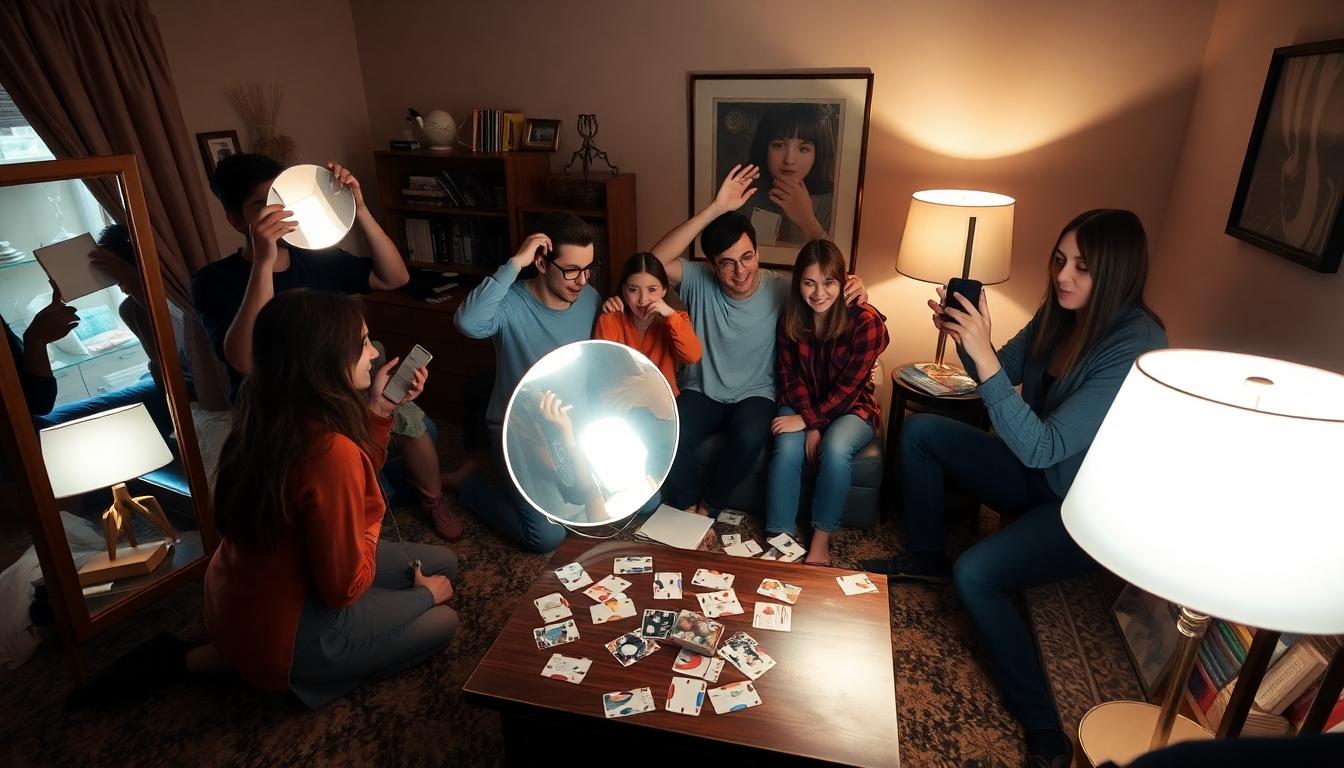
Creating mirror riddles at home is a fun way to challenge friends and family while exploring the fascinating properties of reflection. We’ve compiled everything you need to get started with your own optical illusions and brain teasers.
Materials Needed for Mirror Puzzle Construction
- Mirrors in Various Forms: Gather different types including handheld mirrors, full-length mirrors, and even concave or convex mirrors to create interesting distortion effects.
- Markers and Stickers: These are essential for labeling mirrors or altering their surfaces to create visual cues or hidden clues.
- Paper and Cardboard: Use these materials to create supplementary puzzles or create obstruction patterns that interact with mirror reflections.
- Adjustable Light Sources: Lamps or flashlights will help you manipulate angles and shadows to create exact reflection effects.
- Everyday Objects: Collect small items like spoons, brushes, and other reflective objects to incorporate as props in your riddles.
Step-by-Step Guide to Crafting Challenging Reflections
- Select a Core Concept: Begin by choosing what property of reflection your riddle will exploit—left-right reversal, image distortion through curved surfaces, or multiple reflections are excellent starting points.
- Design Perception Challenges: Create setups where multiple mirrors generate infinite reflections or reveal hidden angles. Try writing text backward that can only be read when reflected in a mirror.
- Incorporate Narrative Elements: Frame your riddles within captivating scenarios such as mystery contexts where participants must identify discrepancies between reality and reflection.
- Balance Difficulty Levels: Ensure your clues provide enough guidance without giving away the solution. Questions like “I reflect smiles but crack if dropped—what am I?” follow classic riddle structures while incorporating mirror properties.
- Refine Through Testing: Ask friends to attempt your riddles and gather feedback to improve logical flow and clarity.
- Add Ambiguity Intentionally: Phrase questions to create dual interpretations, such as “What disappears when you turn me away?” for pocket mirrors.
- Combine Visual and Verbal Elements: Pair physical props with verbal hints for more complex challenges, like using bent spoons to alter facial symmetry in reflections.
- Introduce Time or Material Constraints: Limit available tools or set time restrictions to increase the challenge level of your mirror puzzles.
Digital Mirror Riddles: Apps and Online Challenges
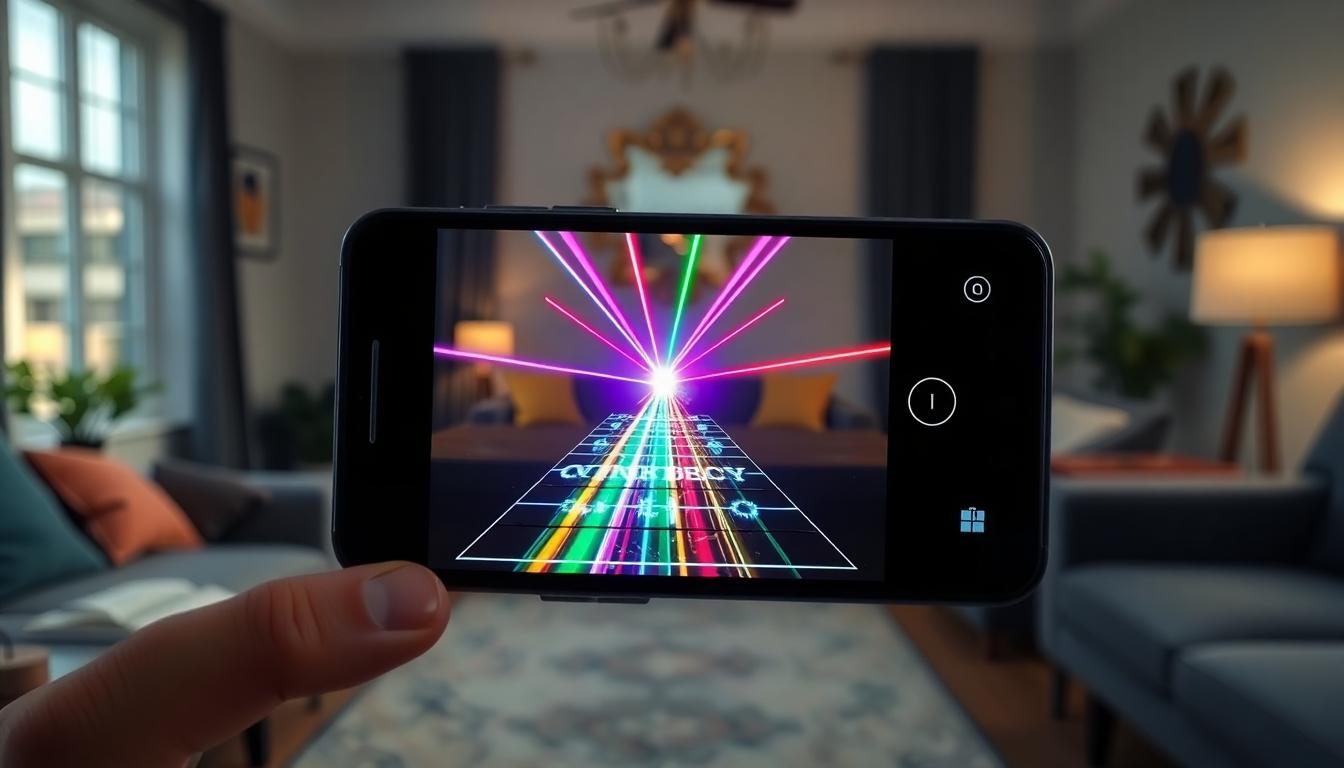
Digital mirror puzzles challenge your spatial reasoning through logic-based games where you redirect lasers or light beams using mirrors. These captivating apps test your strategic planning skills as you align mirrors to hit targets and solve increasingly complex puzzles.
Top-Rated Mirror Puzzle Apps
- Laser Puzzle on Google Play stands out for its focus on strategic mirror placement to activate light bulbs. Players must carefully position reflective surfaces to direct beams toward their targets, effectively improving problem-solving abilities and spatial awareness.
- Mirrors & Reflections Puzzles from Frozax Games offers an impressive collection of 1,100 logic-driven levels with a progressive star-collection system. The game accommodates both beginners and experts with unlimited hints available when you’re stuck on particularly challenging puzzles.
- Mirror Challenge from Uptodown emphasizes precision under pressure, requiring exact mirror adjustments within time constraints. This app pushes players to think quickly while maintaining accuracy in their answers.
- Lazors for iOS devices provides over 100 levels ranging from simple introductory challenges to advanced brain-teasers. The game gradually increases in difficulty as you master the fundamentals of laser and mirror interactions.
Virtual Reality Mirror Challenges
The area of VR-exact mirror puzzle games remains largely unexplored according to current documentation. While traditional mirror puzzle apps like Mirror Challenge and Mirrors & Reflections Puzzles thrive on mobile platforms with touch-based interactions, dedicated VR versions have yet to emerge prominently in the market.
Future developments may see innovative developers leveraging VR technology to create immersive 3D spatial manipulation puzzles. The potential for physically redirecting virtual light beams in three-dimensional space could transform the mirror puzzle experience. VR environments would allow for more intuitive interactions with reflective surfaces, potentially creating more complex and captivating challenges than their two-dimensional counterparts.
Solving Strategies for Complex Mirror Riddles

Mirror riddles challenge our spatial perception and require lateral thinking to solve effectively. We’ve compiled proven strategies that can help you tackle even the most perplexing reflection-based puzzles.
Challenge Your Assumptions
- Question intuitive beliefs about how mirrors work. Many people incorrectly assume mirrors reverse left-to-right, when they actually swap front-to-back, as confirmed by geometric analysis studies.
- Reframe the problem by considering the mirror as a window into a reversed space rather than a simple reflecting surface.
- Develop cognitive flexibility by avoiding fixation on surface features. Research shows that effective puzzle solvers engage their basal ganglia to suppress irrelevant information while prioritizing novel solution paths.
- Test multiple perspectives before settling on an answer, as mirror riddles often deliberately exploit our tendency to make quick spatial judgments.
Pattern Recognition Techniques
- Identify critical features by isolating key elements like symmetry and angular relationships while disregarding distracting information. Decision-making research emphasizes that recognizing non-matches is vital for narrowing down viable answers.
- Apply analogical reasoning to map abstract relationships between objects and their reflections. Neuroimaging studies connect this ability to prefrontal cortex activity during insight-driven problem-solving.
- Look for recurring motifs in how the riddle presents information about reflections, as pattern recognition often reveals hidden clues.
- Break complex riddles into simpler components to identify underlying patterns that might not be immediately obvious when viewing the problem as a whole.
Spatial Reasoning Approaches
- Practice mental rotation by visualizing mirrored transformations of objects. Research indicates that spatial ability strongly predicts success in puzzle-solving tasks.
- Apply dimensional analysis by decoupling vertical and horizontal axes to understand why mirrors appear to invert selectively. Answers frequently involve reframing your reference point.
- Use executive control to inhibit intuitive-but-incorrect responses. Neuroscience research points to basal ganglia pathways that modulate cognitive focus as crucial for overcoming misleading initial impressions.
- Create physical models when mental visualization becomes too challenging, as tactile feedback can provide additional insight into spatial relationships that might be difficult to conceptualize abstractly.
The Future of Mirror Riddles: Augmented Reality and Beyond
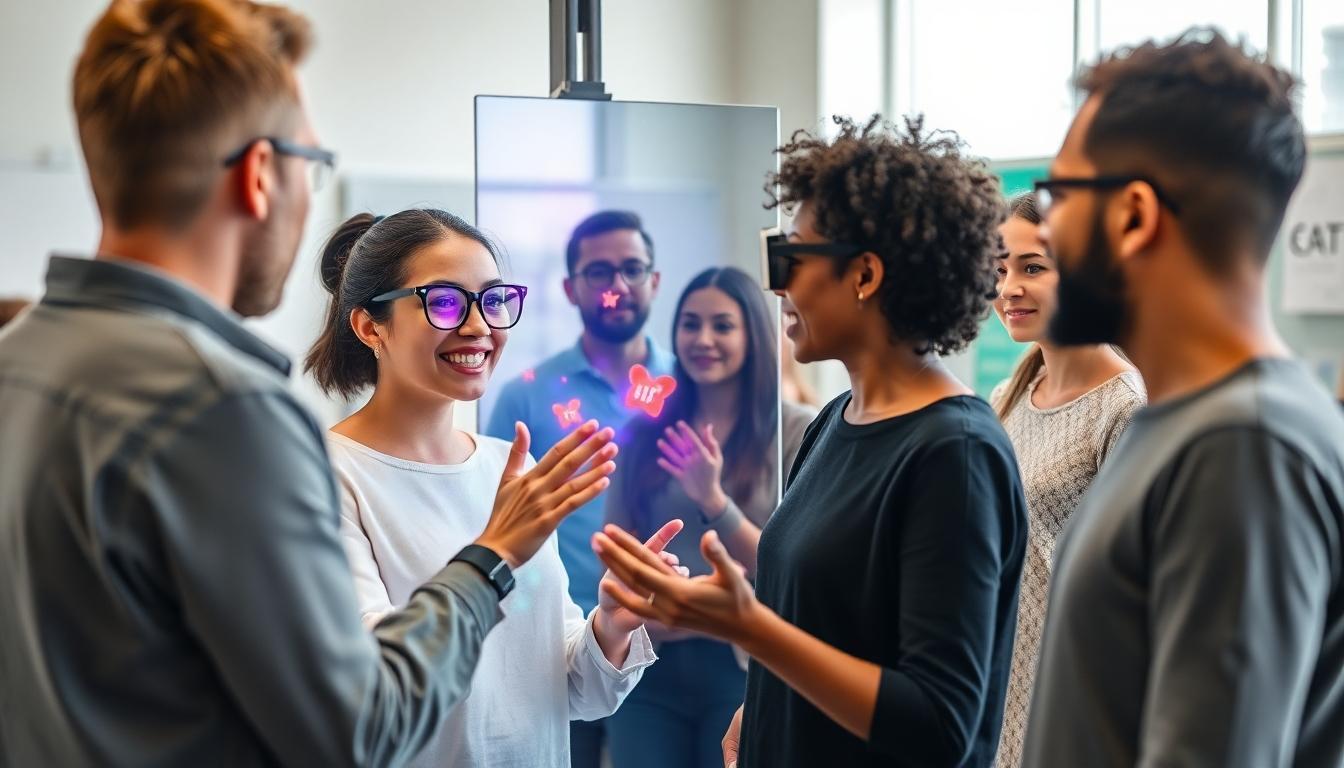
Augmented Reality (AR) technology stands poised to revolutionize traditional mirror riddles by creating immersive, interactive experiences that challenge our perception in entirely new ways. We’re witnessing the early stages of a transformation where static mirror puzzles evolve into ever-changing digital experiences. AR applications can project virtual mirrors that manipulate reflections according to programmable rules, creating puzzles impossible to replicate with physical mirrors.
The integration of AR with mirror riddles opens possibilities for multilayered challenges where users must navigate both physical and virtual reflection properties simultaneously. Virtual mirrors in AR environments can instantly switch between concave and convex surfaces, similar to the spoon reflection riddle but with unprecedented control and variation. Users might solve puzzles by manipulating virtual objects reflected in these ever-changing mirrors, requiring a deeper understanding of spatial relationships and reflection principles.
Interactive elements in AR mirror riddles allow for progression-based challenges that adapt to the solver’s skill level. The technology can seamlessly transition between simple reflection paradoxes to complex scenarios involving multiple virtual mirrors with different properties. AR headsets create opportunities for full-body mirror puzzles where players must position themselves correctly to align virtual reflections, adding a kinesthetic dimension to traditional brain teasers.
Beyond entertainment, these advanced mirror riddles serve educational purposes by visualizing complex concepts in physics and optics. Students can experiment with light paths, angles of incidence, and reflection properties in a hands-on virtual environment. The future likely holds collaborative AR mirror challenges where multiple users interact with shared virtual reflections, combining problem-solving skills to unravel increasingly sophisticated mirror-based puzzles.
As AR technology continues advancing, we anticipate mirror riddles that incorporate real-time environmental factors, creating contextualized puzzles based on the user’s surroundings. Imagine puzzles where the solution changes based on time of day, weather conditions, or geographic location—all reflected in virtual mirrors that respond to these variables. This evolution represents not just an enhancement of traditional mirror riddles but a fundamental reimagining of how we engage with concepts of reflection, perception, and reality itself.
Conclusion: Reflecting on the Value of Mirror Riddles
Mirror riddles stand as captivating challenges that transcend mere entertainment. They invite us to question our perception while strengthening critical thinking skills in ways few other puzzles can match.
From children developing spatial awareness to adults testing their cognitive flexibility these brain teasers offer something for everyone. Whether encountered in classic literature through AR applications or created at home with simple materials their appeal remains timeless.
We’ve explored their historical significance educational benefits and cultural impact while providing strategies to solve even the most complex reflection puzzles. As technology evolves so too will these fascinating enigmas continuing to reflect our endless fascination with perception reality and the mysteries of reflection.
Frequently Asked Questions
What makes mirror riddles different from other types of puzzles?
Mirror riddles uniquely challenge our perception by exploiting how our brains process reflections and spatial relationships. They require us to visualize reflections, understand symmetry concepts, and often involve lateral inversion—where mirrors create front-to-back reversals rather than simply flipping images left to right. This creates cognitive dissonance that makes them particularly challenging even for experienced puzzle enthusiasts.
How do mirror riddles benefit children’s development?
Mirror riddles develop children’s spatial awareness, enhance self-recognition, build cognitive skills, and introduce mathematical concepts like symmetry. These puzzles improve problem-solving abilities while strengthening emotional intelligence as children learn to recognize facial expressions in reflections. By engaging with mirror puzzles, children develop critical thinking skills that benefit their overall cognitive growth in an entertaining format.
Who was Lewis Carroll and how did he influence mirror riddles?
Lewis Carroll, author of “Alice’s Adventures in Wonderland,” significantly influenced mirror puzzles through “Through the Looking-Glass,” which established a framework for mirror-themed puzzles. Though he never published a dedicated collection of mirror riddles, his works feature reversed realities and clever wordplay that embody the essence of these puzzles, inspiring generations of puzzle makers to explore reflections as literary and logical devices.
What is the left-right reversal paradox in mirrors?
The left-right reversal paradox refers to our misconception that mirrors flip images horizontally. In reality, mirrors create a front-to-back reversal that confuses our spatial reasoning. When you raise your right hand, your reflection appears to raise its left hand because the reflection is facing you, creating the illusion of horizontal flipping. This fundamental property forms the basis of many challenging mirror riddles.
How are mirror riddles used in popular culture?
Mirror riddles appear throughout literature and media as powerful symbols of self-reflection and duality. Examples include the enchanted mirrors in “Harry Potter” that reveal desires, and mirror mazes in films that represent psychological journeys. Visual media often features physics-based mirror puzzles where characters must solve reflection challenges to progress, demonstrating the enduring cultural fascination with mirrors as narrative devices.
How is technology changing mirror riddles?
Technology is revolutionizing mirror riddles through digital apps, VR, and AR applications. Modern apps like “Laser Puzzle” and “Mirrors & Reflections Puzzles” offer interactive challenges that test spatial reasoning skills. Augmented Reality is creating immersive experiences where virtual mirrors can follow programmable rules and adapt to environments. These technological advances are transforming traditional mirror puzzles into dynamic, multilayered experiences.
What materials do I need to create mirror riddles at home?
To create mirror riddles at home, gather various mirrors (flat, curved, pocket, and full-length), dry-erase markers, paper, tape, common household objects, and a flashlight. Optional materials include colored transparent sheets, a protractor for measuring angles, and a smartphone camera to document puzzle solutions. These basic supplies allow you to design perception challenges and optical illusions that explore fascinating properties of reflection.
What strategies help solve difficult mirror riddles?
To solve complex mirror riddles, challenge fundamental assumptions about mirrors, develop cognitive flexibility by testing multiple perspectives, and approach mirrors as windows to reversed spaces. Apply pattern recognition by isolating key elements and looking for symmetry. Enhance spatial reasoning through mental rotation and dimensional analysis. Taking breaks also helps your unconscious mind process information when you’re stuck on a particularly challenging puzzle.
Are there different difficulty levels of mirror riddles?
Yes, mirror riddles range from beginner to expert levels. Simpler riddles for children might involve finding readable words in mirrors or basic reflection identification. Intermediate challenges incorporate wordplay and optical illusions requiring lateral thinking. Advanced riddles combine multiple mirrors, physics principles, and complex spatial reasoning. The most difficult incorporate infinite reflections between parallel mirrors or require understanding perspective shifts across dimensional boundaries.
How do mirror riddles improve problem-solving skills?
Mirror riddles enhance problem-solving by forcing us to reconcile what we see with what we know is true, developing cognitive flexibility. They require both top-down processing (applying existing knowledge) and bottom-up processing (analyzing new visual information). Solving these puzzles strengthens metacognition, visual-spatial reasoning, and creative thinking, ultimately improving our ability to approach all types of problems from multiple perspectives.







